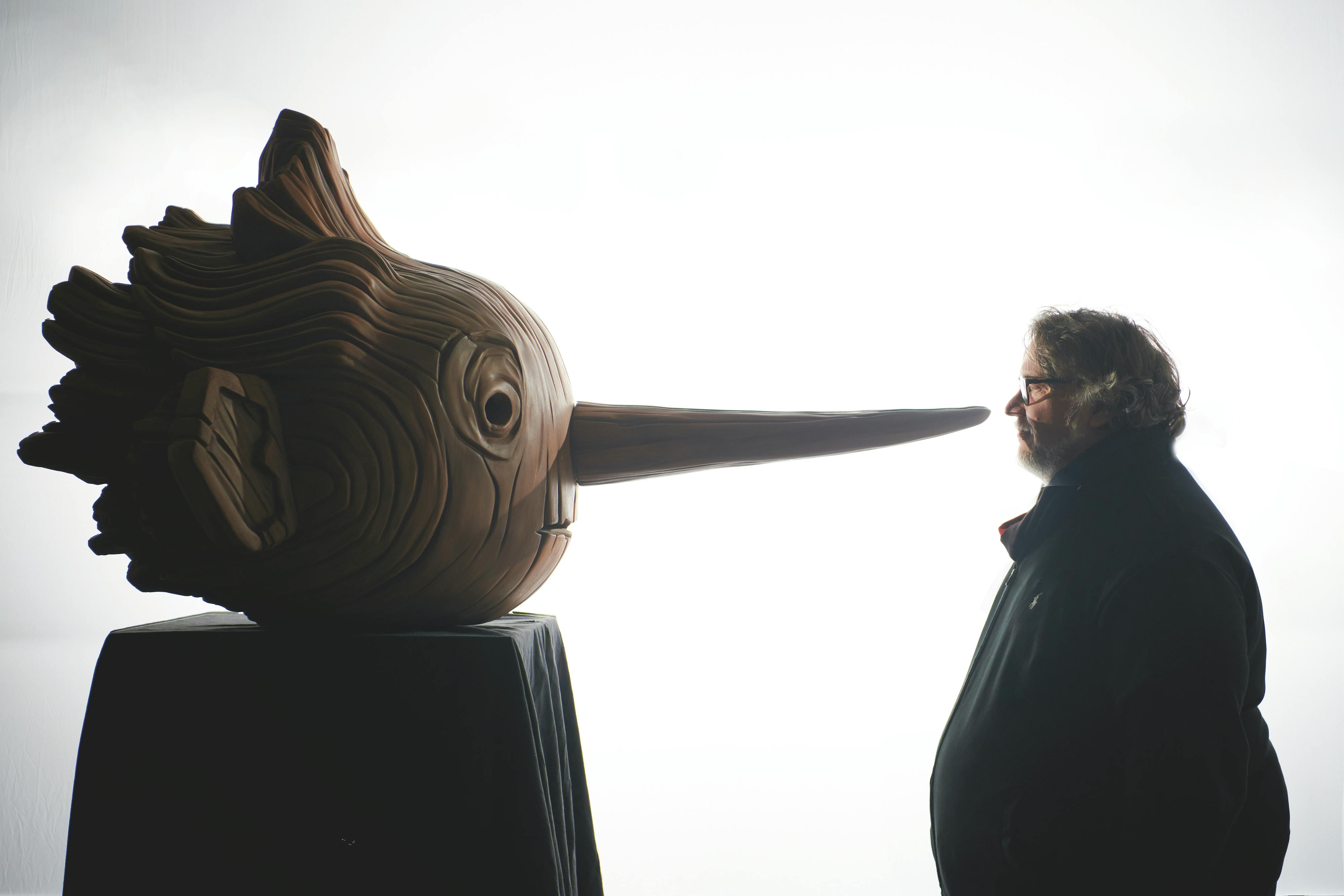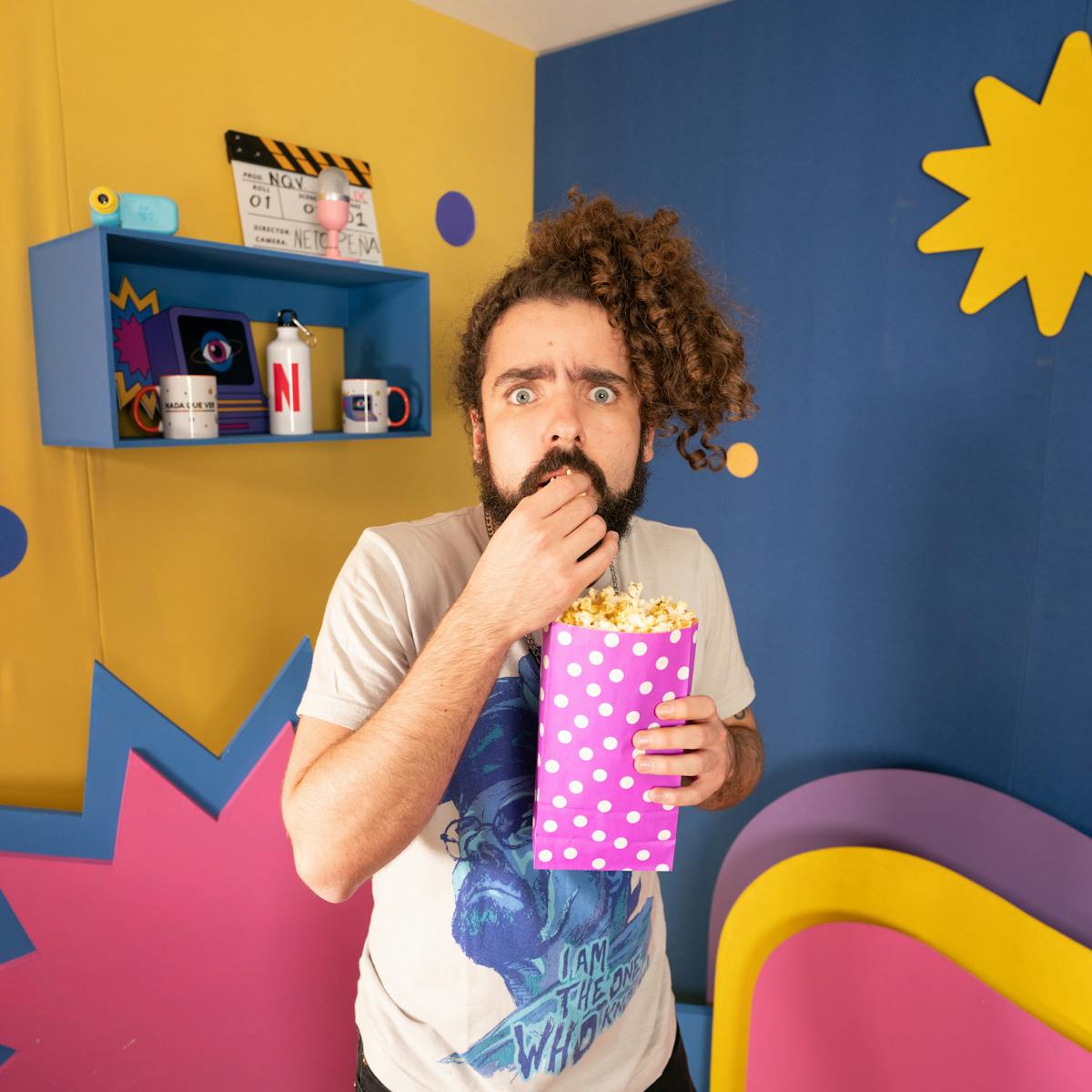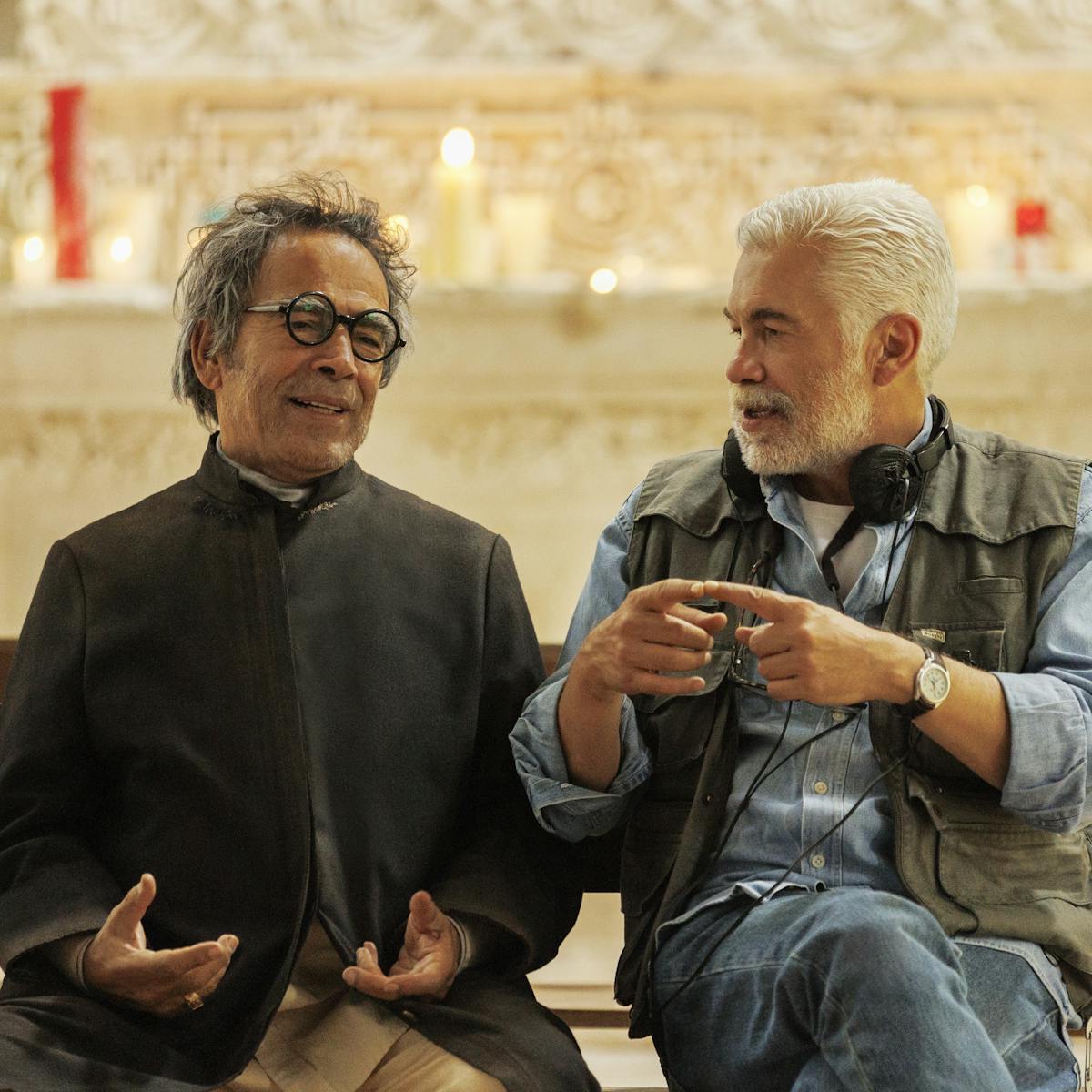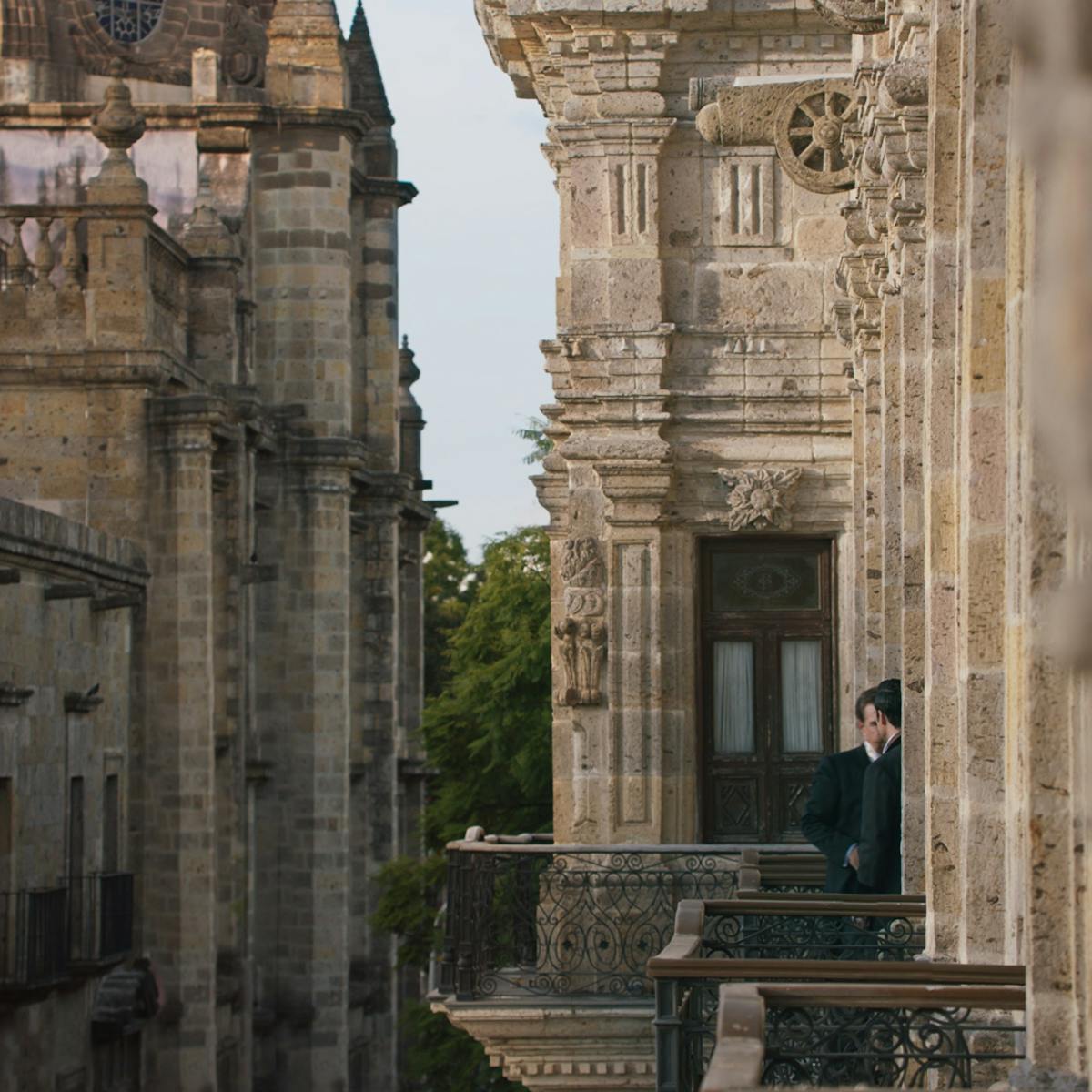The Mexican auteur brings his signature twist to a classic tale.
In the annals of animation history, 1940’s Pinocchio is generally considered one of the most frighteningfeatures ever made, thanks to its harrowing sequences of ill-behaved boys transforming into donkeys and a fearsome giant whale called Monstro. The nightmarish imagery terrified a generation of young moviegoers, but watching the film as a child in Guadalajara, Mexico, a young Guillermo del Toro was riveted. “I was very much in love the first time I saw Pinocchio partially because I thought it was a horror movie in a way,” recalls del Toro. “The Disney Pinocchio had such intense moments.”
Now, the Oscar-winning The Shape of Water filmmaker is bringing his own bold interpretation of the classic Italian fairy tale to the screen. Arriving this December, Guillermo del Toro’s Pinocchio represents not only the realization of a lifelong passion project, but also marks a couple of important career milestones for the busy auteur. Guillermo del Toro’s Pinocchio is del Toro’s first stop-motion animated production, and it’s also his first musical, featuring songs co-written by the filmmaker, The Shape of Water composer Alexandre Desplat, and lyricist Roeban Katz.
“I thought it would be beautiful to make a heartfelt movie that any audience could watch, a movie that would push the boundaries of stop-motion animation as much as possible,” del Toro says of the film. “We wanted to create a movie about a puppet using puppets to tell the tale.”
Written by del Toro and Patrick McHale (Over the Garden Wall), Guillermo del Toro’s Pinocchio unfolds in Benito Mussolini’s Italy, where a poor woodworker named Geppetto is grieving the death of his beloved son Carlo, a loss that robs him of his faith and sends him spiraling into alcoholism and despair. Years later, in a fit of rage and desperation, he decides to carve a new son from the trunk of a pine tree planted beside Carlo’s grave — not realizing that the tree is now home to one Sebastian J. Cricket, a witty world traveler and self-described raconteur who serves as the movie’s narrator.
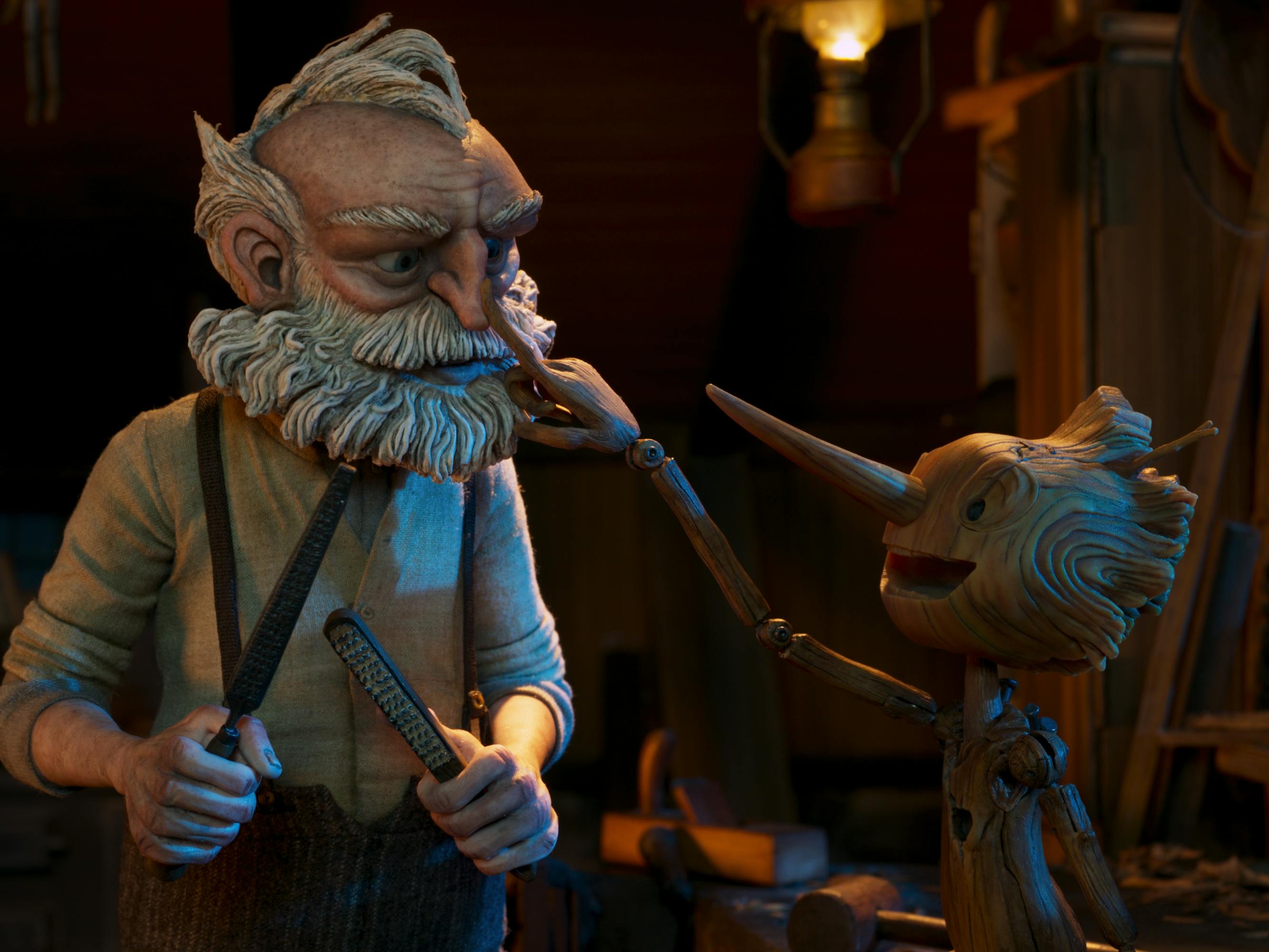
Geppetto (David Bradley) and Pinocchio (Gregory Mann)
Once Geppetto completes his rough-hewn puppet, an otherworldly spirit visits his workshop and uses her magic to bring the little wooden boy to life, assigning Sebastian J. Cricket to serve as his moral compass. But wrangling the naive and sprightly boy is not easy. Pinocchio is simply too curious about the world around him to remain inside Geppetto’s modest home for long. Soon after venturing out into their small village, he’s lured away to join the carnival by its fiendish ringmaster Volpe and his albino monkey henchman Spazzatura, whose tempting promise of hot chocolate and other treats proves irresistible.
Along his journey, Pinocchio finds himself in intimidating situations: ending up at a Fascist training camp for young boys and encountering not only Mussolini himself but also the Sphinx-like personification of Death, who occupies a timeless realm known as Limbo. Even amid the underworld, the hero is reluctant to abide by the rules presented to him. “To me, it was important to show a world in which everybody behaves like a puppet and only the puppet chooses to be disobedient,” del Toro says. “He then finds his own morality, his own soul, and his own humanity.”
Although del Toro had aspired to make Guillermo del Toro’s Pinocchio since his teen years, the impetus for seriously pursuing the project came when he discovered the 2003 edition of author Carlo Collodi’s original Pinocchio tales published by Tor Books and illustrated by artist Gris Grimly. Struck by the way Grimly had drawn the puppet character — with a long, pointed nose and spindly limbs — del Toro could suddenly envision the world that his own Pinocchio might inhabit. “In a few gestures, Gris captured the energy of the character as I’d never seen before,” del Toro says. “He had the childlike energy and purity of a puppet that is unruly but has a good heart. I thought, This is a perfect time for me to now do the more somber version of Pinocchio.”
After initially planning to produce a movie that Grimly would direct, del Toro eventually chose to step behind the camera and recruited stop-motion animation veteran Mark Gustafson (Fantastic Mr. Fox) to help him realize his ambitious vision.

Pinocchio (Gregory Mann)
“I really liked the notion of a creation that comes into the world absolutely fresh and has no notion of consequences,” Gustafson says. “So, what happens when that character then goes on this journey and discovers the real world and how it actually works? The notion of putting those [ideas] against the backdrop of the rise of Fascism in Italy between World War I and World War II seemed fascinating and strangely topical.”
Together, the two directors spent years refining the designs for the principal characters, which were either adapted from Grimly’s work or created entirely by del Toro’s longtime concept artist Guy Davis, who went on to serve as Guillermo del Toro’s Pinocchio’s co-production designer with Curt Enderle (Isle of Dogs, The Boxtrolls). They then turned to England’s Mackinnon & Saunders, the world’s leading company specializing in puppets for stop-motion productions, to create the principal characters, including Pinocchio, Geppetto, Cricket, Volpe, and Spazzatura. “They are the best in the world,” del Toro says. “The starring roles of the movie needed to be fabricated by them.”
In assembling the cast for Guillermo del Toro’s Pinocchio, del Toro and Gustafson brought together a powerhouse ensemble that included multiple Oscar winners and gifted performers with whom del Toro had longstanding creative ties. Chief among them was David Bradley — who had starred in both the director’s live-action television series The Strain and the animated series Trollhunters — as Geppetto. “It’s a real emotional rollercoaster of a part,” Bradley says. “It’s more like King Lear than the Pinocchio I remember from when I was a kid.”
Additionally, Ewan McGregor was cast as Cricket; Christoph Waltz as Volpe; Cate Blanchett as monkey Spazzatura; Ron Perlman as villainous Fascist officer the Podestà; Stranger Things’s Finn Wolfhard as the Podestà’s son, Candlewick; and Tilda Swinton as both the Wood Sprite and Death. For Pinocchio himself, the directors turned to a newcomer, young British actor Gregory Mann. “I needed a voice that didn’t sound cute, [that] sounded just like any other kid,” del Toro says. “With Gregory, the range of his voice is phenomenal. He’s really good at being natural. There is absolute, pure emotion there.”
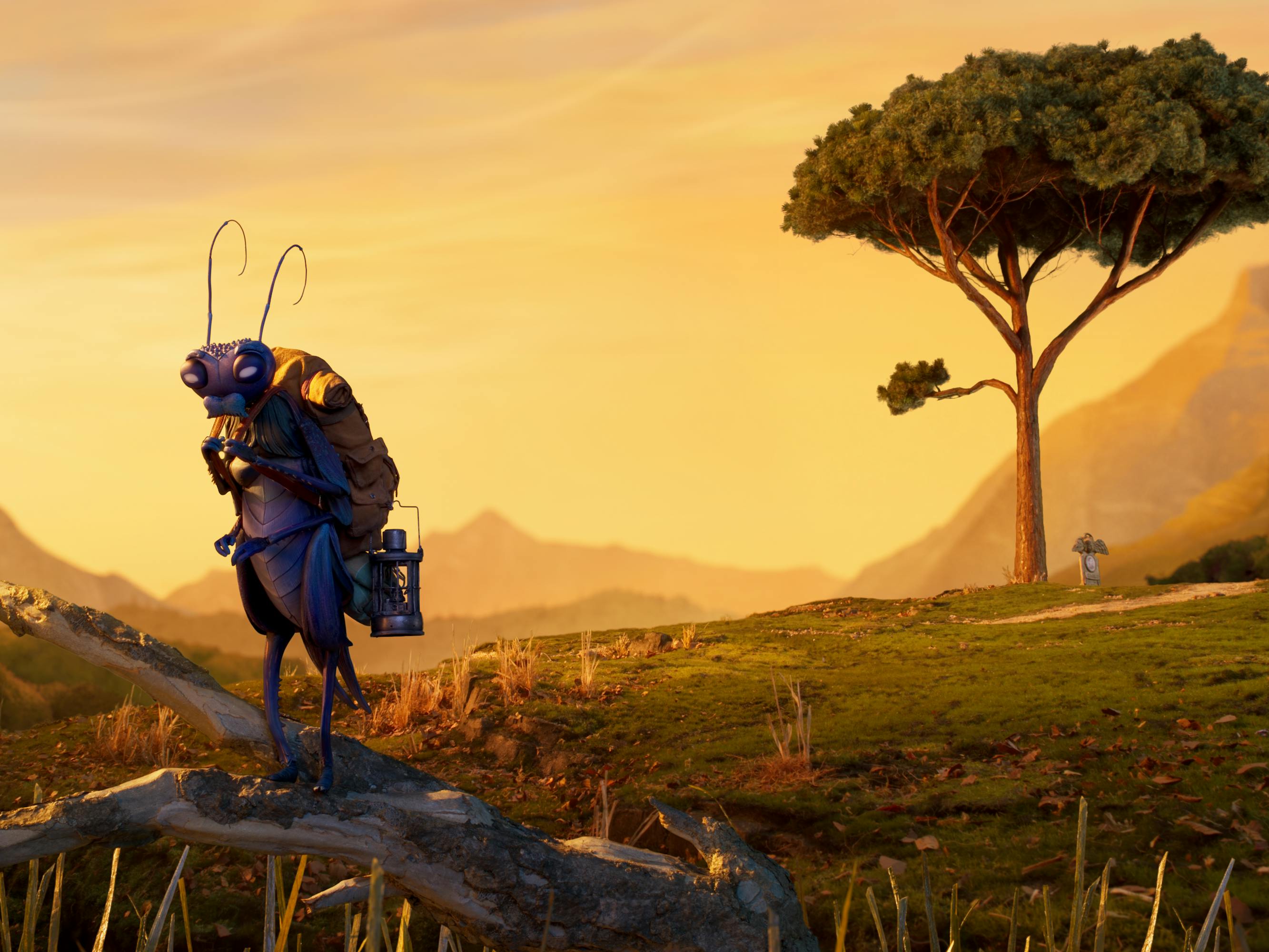
Sebastian J. Cricket (Ewan McGregor)
Production got underway in the Portland offices of animation house ShadowMachine in January 2020 and continued through the early summer months of 2022, with select sequences filmed in Guadalajara at Centro Internacional de Animación (CIA), an animation studio that del Toro founded in 2019 to develop local talent and foster production in central-western Mexico. The sets, props, and costumes were all crafted to the same exacting standard as those seen in del Toro’s live-action work and rooted in historical research and real-world reference. “One of the decisions we made early on was that we were not going to overly stylize the buildings,” del Toro says. “They are not curvy, stretched, leaning, none of that.”
The directors also encouraged the animators on set to try to achieve naturalistic performances from the puppets. “We wanted to shoot characters listening and thinking, moments that are normally not shot in animation, moments that have the character alone, changing a thought, in silence,” del Toro explains. “[We wanted to see] characters making mistakes — itching, sneezing, looking away when they feel afraid or ashamed. We returned all the mechanics in the puppets to the command of the animator.”
The resulting film is one that feels like a unique fusion of live-action and stop-motion that closely mirrors ideas that have long been central to del Toro’s best-loved work. In films like The Devil’s Backbone (2001), Pan’s Labyrinth (2006), and The Shape of Water (2017), he has repeatedly showcased the humanity of those perceived as “other.” With Guillermo del Toro’s Pinocchio, he pointedly upends one of the classic tropes of the familiar story — that the puppet should be transformed into a human boy to find happiness.
“When I was a kid, I thought, So, it means in order to be loved you have to change?” del Toro reflects. “I couldn’t accept that. What was clear in my mind was that he should never turn into a real boy, nor should that be a goal he fails to achieve.” Instead, the story emphasizes Geppetto’s journey toward accepting Pinocchio for who he is, and toward loving him as fiercely as he loved Carlo. “I want to dedicate my side of this movie to my father, who I lost after The Shape of Water,” del Toro says. “Ultimately, most of my movies are about my father in a strange way.”
